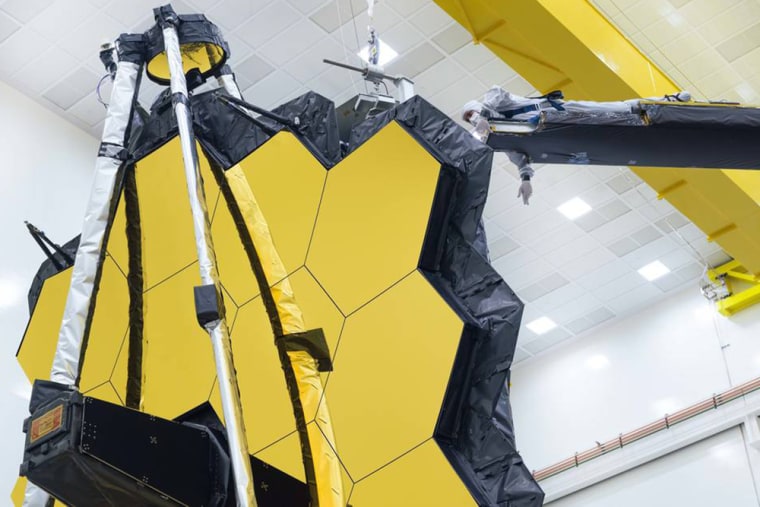The James Webb Space Telescope, NASA's successor to the prolific Hubble Space Telescope, is undergoing final tests ahead of its much-anticipated launch later this year.
Engineers are taking one last look at the telescope's giant honeycomb-shaped primary mirror, marking the final time that the instrument is fully unfurled on Earth. The tests are an important milestone before the observatory is packed and shipped to French Guiana, where it is scheduled to launch into space Oct. 31.
The next-generation James Webb Space Telescope will be the largest and most powerful space science observatory, according to NASA. With its infrared eyes, it will be able to study some of the oldest and most distant stars in the universe. And its powerful instruments, designed to observe the atmospheres of planets around other stars, could usher in a new era of astronomy.
"The discovery capability of Webb is limited only by our own imaginations, and scientists around the world will soon be using this general-purpose observatory to take us places we haven't dreamed of going before," Eric Smith, a Webb program scientist at NASA headquarters in Washington, D.C., said in a news briefing Tuesday.
But for all the fanfare, the nearly $10 billion Webb telescope has also been plagued by delays and budget issues. The observatory was originally slated to launch in 2007 at a cost of roughly $1 billion, but the design and scope of the mission have swelled, along with the project's price tag.
The coronavirus pandemic added another hurdle, forcing NASA to push the telescope's 2021 launch several months back, from March to late October.
Still, the project holds enormous promise for astronomy and the search for life on other planets.
The telescope's primary mirror, which measures more than 21 feet across and is made up of 18 gold-coated hexagonal segments, is sensitive enough to detect the glow from the first stars that formed in the universe.
After its launch, the Webb telescope will carefully unfold itself and deploy a sun-shield the size of a tennis court that acts like a parasol to protect the telescope's sensitive instruments. After that, the observatory will spend six months journeying to a gravitationally stable spot beyond the moon's orbit, nearly 1 million miles away from Earth.
The telescope is expected to help scientists better understand not only the solar system, but also planetary systems around other, more distant host stars, according to NASA.
"Webb is going to study all phases of cosmic history," Smith said.

